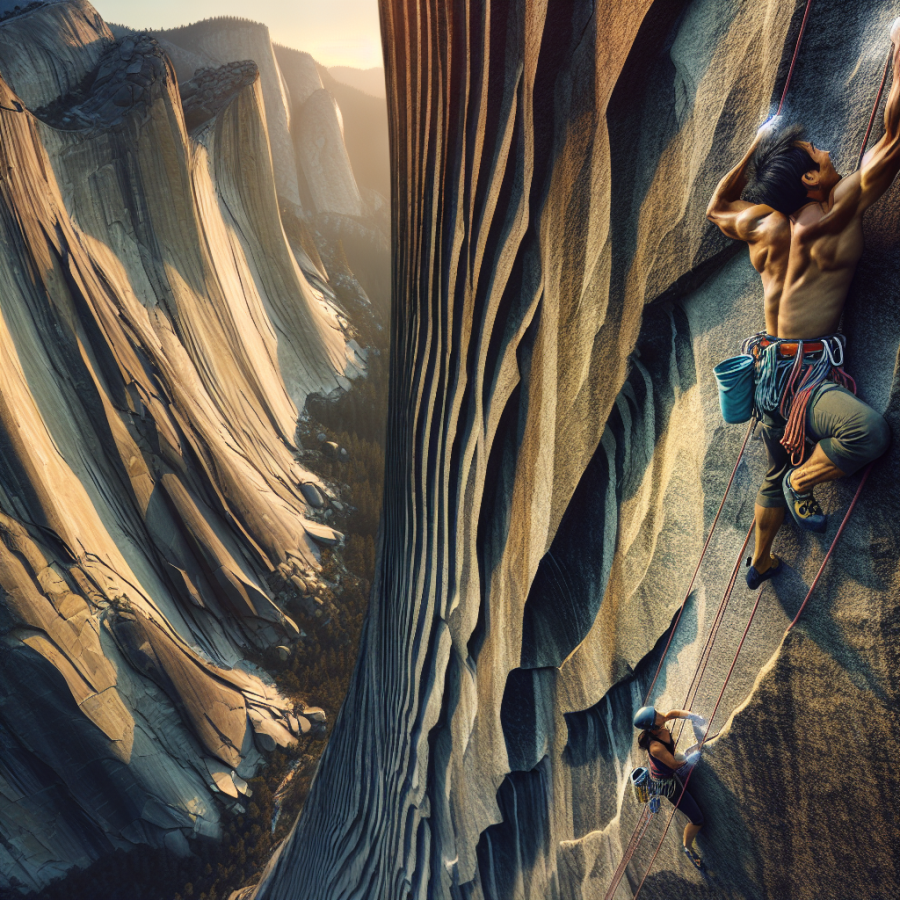Ascending the Giants: Mastering the Art of Big Wall Climbing
Ascending the Giants: Mastering the Art of Big Wall Climbing
When embarking on the extraordinary adventure of big wall climbing, climbers must not only possess a fundamental set of technical skills but also a profound level of physical fitness and mental fortitude. This challenging sport involves scaling vast, vertical rock faces that often require multiple days to ascend, with climbers typically spending nights suspended in mid-air on portaledges.
The first step in mastering big wall climbing is comprehensive training. Climbers must hone core techniques such as crack climbing and aid climbing. Crack climbing involves navigating fissures in the rock, using a blend of specialized placements for hands, feet, and gear. On the other hand, aid climbing is a method by which climbers use gear placements not just for protection but also for upward progress.
To prepare for the demands of big wall climbing, aspirants should focus on building endurance. This involves undertaking extensive aerobic exercises, practicing on smaller climbs to simulate the endurance needed for multi-day ascents. Additionally, grip strength and upper body conditioning are crucial due to the constant gripping of holds and the weight of the gear that climbers must carry.
Mental preparation is equally important. Climbers must learn to maintain composure in high-stress situations, make crucial decisions from dizzying heights, and deal with the isolation that comes with being on a vertical expanse. Techniques such as visualization, breathing exercises, and focused mental training can aid in developing the resilience required for big wall successes.
Equipping themselves properly is pivotal for climbers. The gear list includes ropes, harnesses, helmets, camming devices, nuts, ascenders, and haul bags, among others. Understanding how to efficiently use and manage these tools is vital to ensure both progression on the wall and safety in the event of a fall or emergency.
Route selection plays an important role in the big wall experience. Climbers should choose routes within their capability, taking into account their technical expertise and conditioning level. Studying the route beforehand is paramount, including familiarization with the type of rock, common weather patterns, and any logistical concerns, such as water sources and bivy spots.
The execution phase involves the strategic use of time. Climbers must pace themselves to ensure they have enough energy and daylight for the most demanding sections, and also schedule rests to recuperate and maintain sharpness. Efficient transition between free climbing and aid climbing, quick gear placements and changes, and effective communication with the climbing partner are essential practices on the wall.
Read also:
Unveiling the Underwater Marvels: Snorkelling Escapades
Tackling Gravity: Techniques and Triumphs in Vertical Endeavors
Vertical climbing, specifically big wall climbing, is a pursuit that pushes the boundaries of human capacity, pitting climbers against some of the most awe-inspiring edifices that nature has to offer. This sport requires not only physical strength and endurance but also mental fortitude and a well-honed skill set. In this section, we delve into the technical techniques climbers deploy to conquer these giant rock faces and celebrate their remarkable triumphs.
Mastering the Mechanics: Technique is the cornerstone of successful vertical climbing. On sheer cliff faces, where hand and foothold options are scarce, climbers must employ creative problem-solving with every move. Advanced climbing techniques such as edging, where climbers use the edges of their climbing shoes to balance on tiny footholds, or smearing, which involves pressing the sole of the shoe against the wall for friction, are crucial. Crack climbing, another vital skill, involves wedging fingers, hands, or even entire limbs into fissures in the rock to ascend.
Tools of the Trade: Alongside technique, climbers rely on an arsenal of specialized gear. This includes cams, nuts, and other trad (traditional) climbing hardware that can be placed into rock features for protection. For longer routes, portaledge camps may become a necessary part of the vertical adventure, allowing climbers to rest and recharge hundreds of feet above the ground. Harnessing the power of these tools without altering the rock face maintains the integrity of the climb and the environment.
The Mental Game: Climbing big walls is as much a psychological endeavor as a physical one. Mental training centers on overcoming fears, particularly the fear of falling. It also involves the cultivation of patience and the ability to stay motivated during long, grueling hours on the rock. Tackling long multi-pitch routes demands impeccable focus and the ability to strategize effectively.
Training for Triumph: To succeed in vertical climbing, one must adhere to a rigorous training regimen. This involves building core strength, fostering endurance, and practicing skills on smaller climbs before attempting to conquer larger ones. Climbers often spend significant time on bouldering problems or working on sport routes to refine their technique and build strength.
Pushing Boundaries: Big wall climbers constantly push the limits of what is considered possible. Historic ascents like the Dawn Wall on El Capitan have expanded the realm of big wall climbing.




